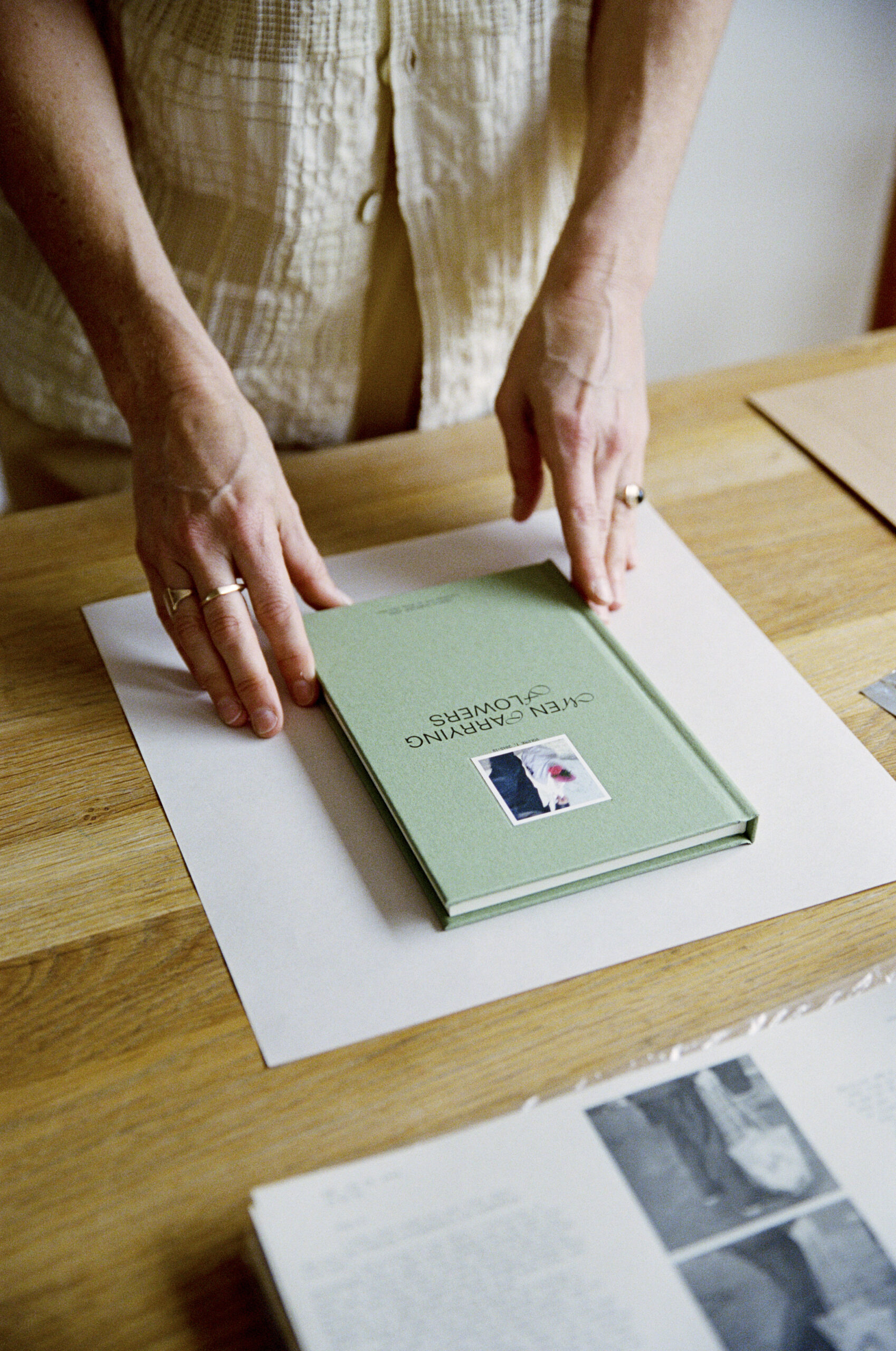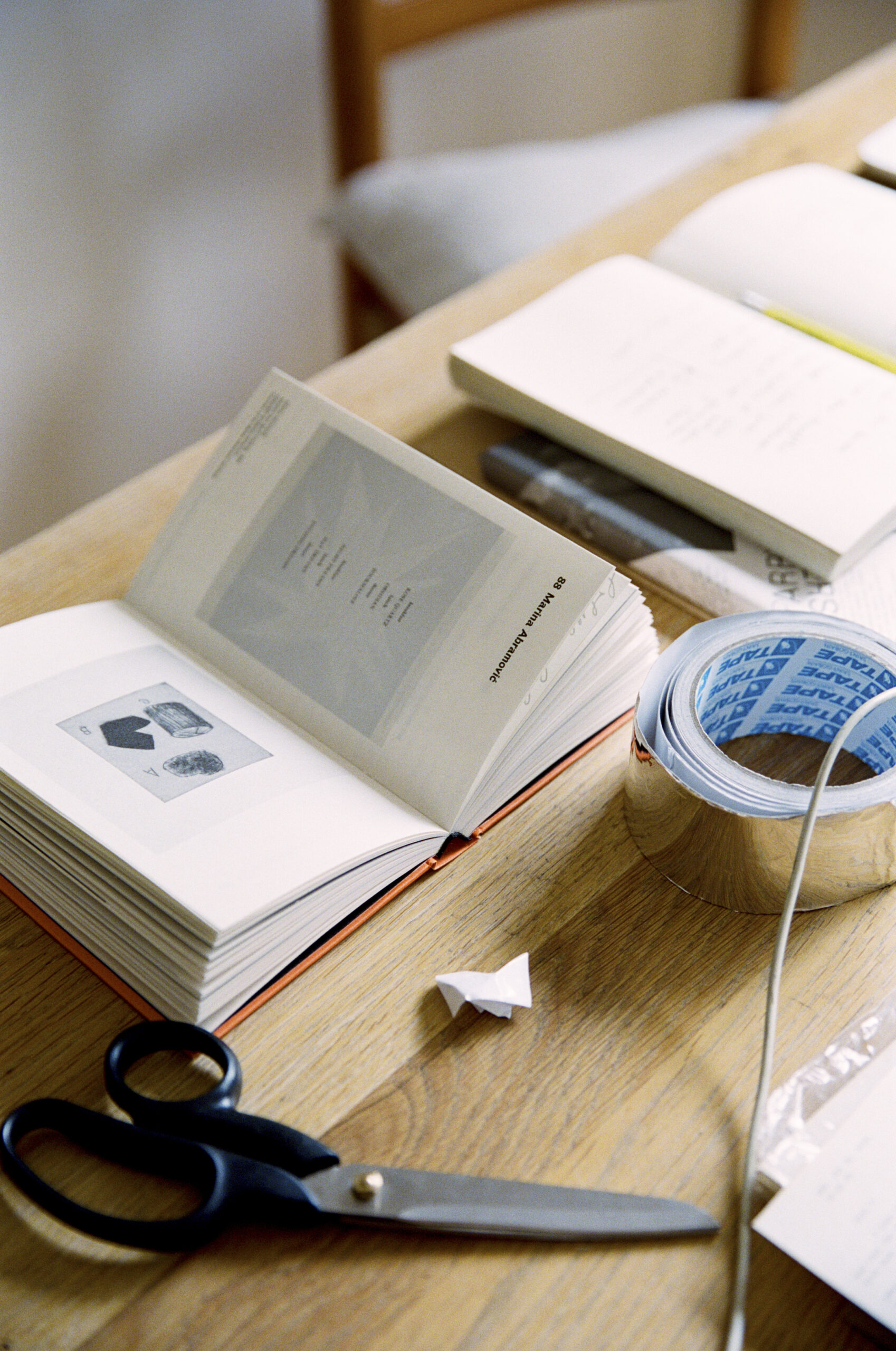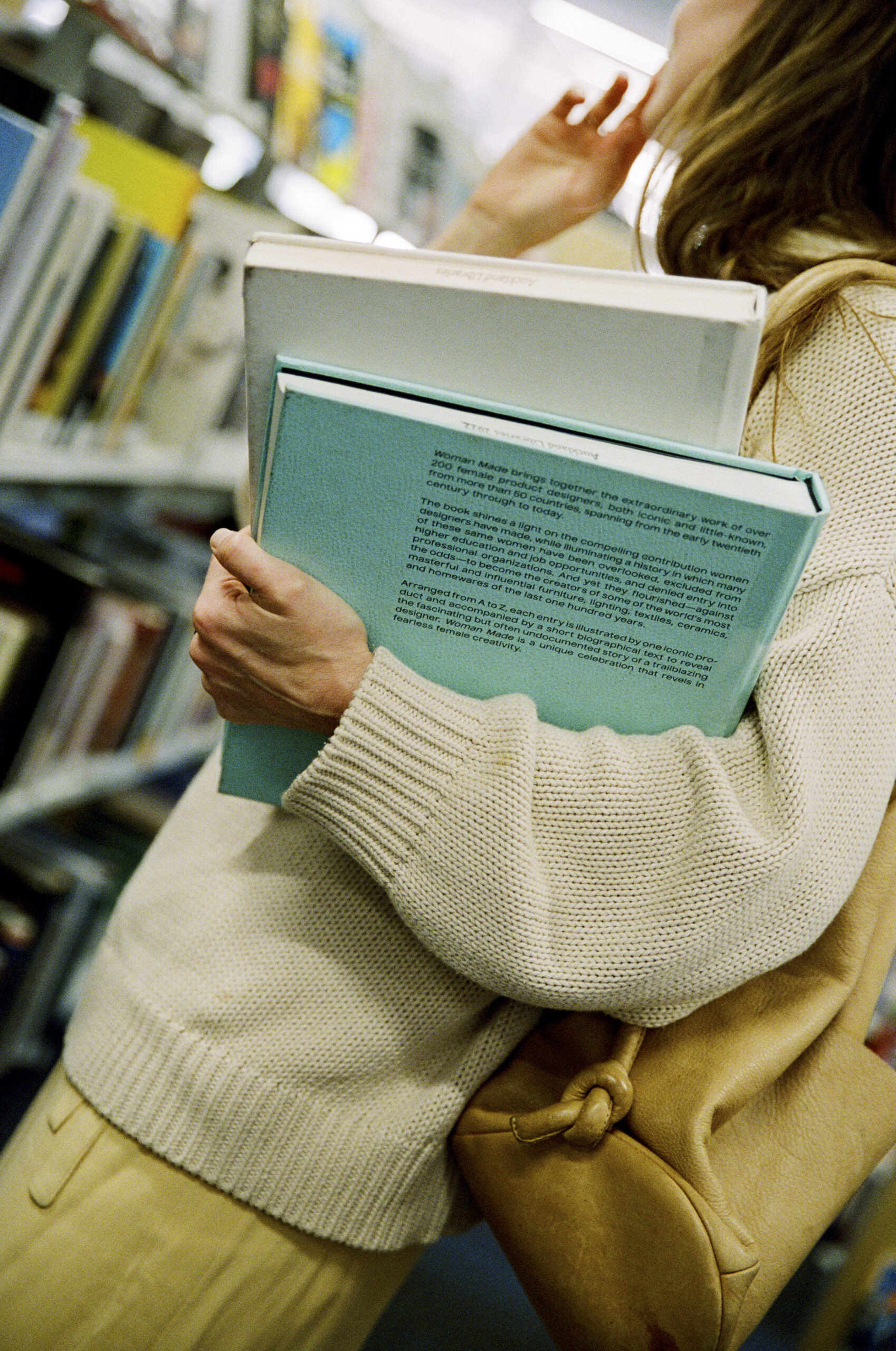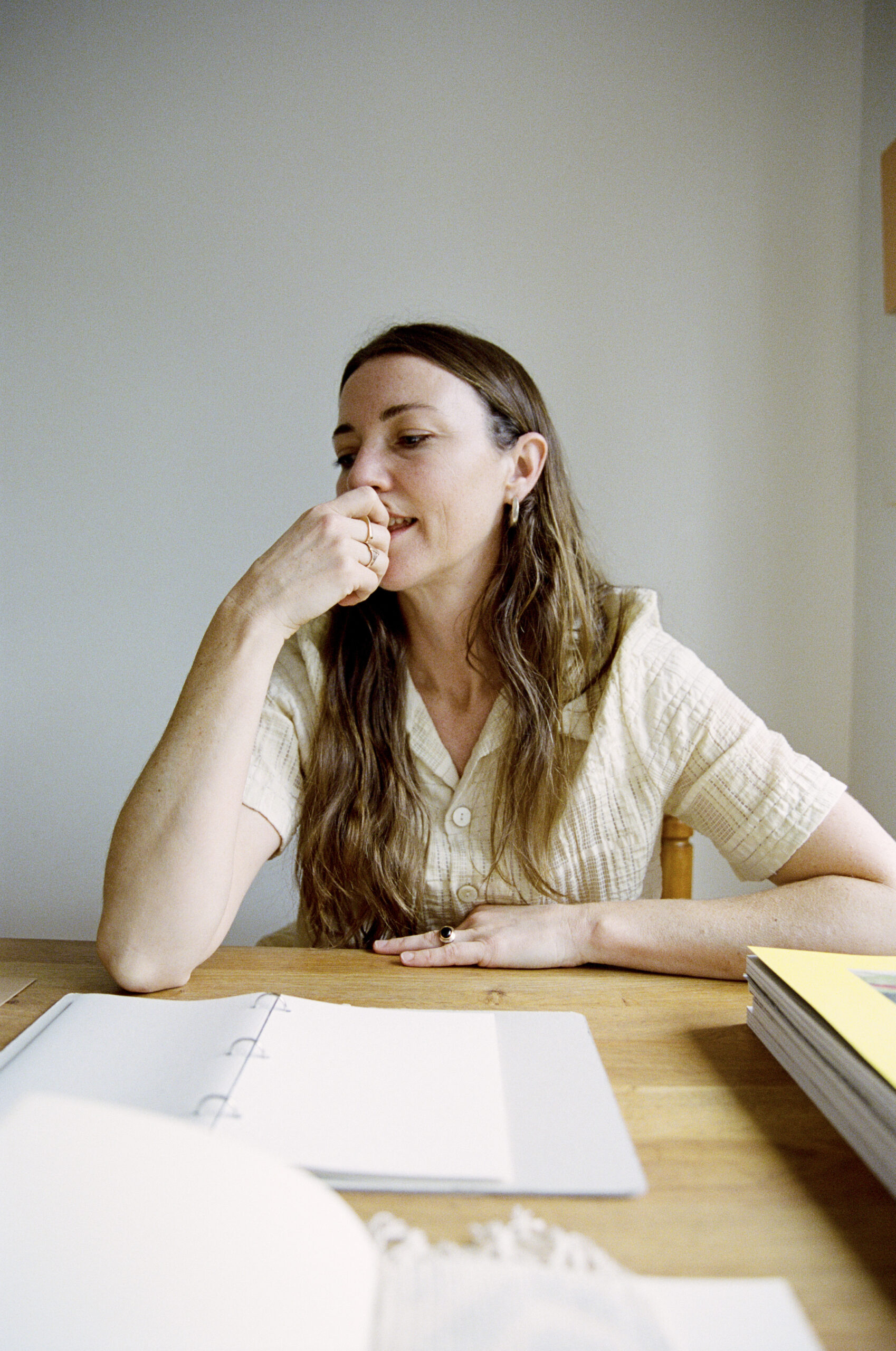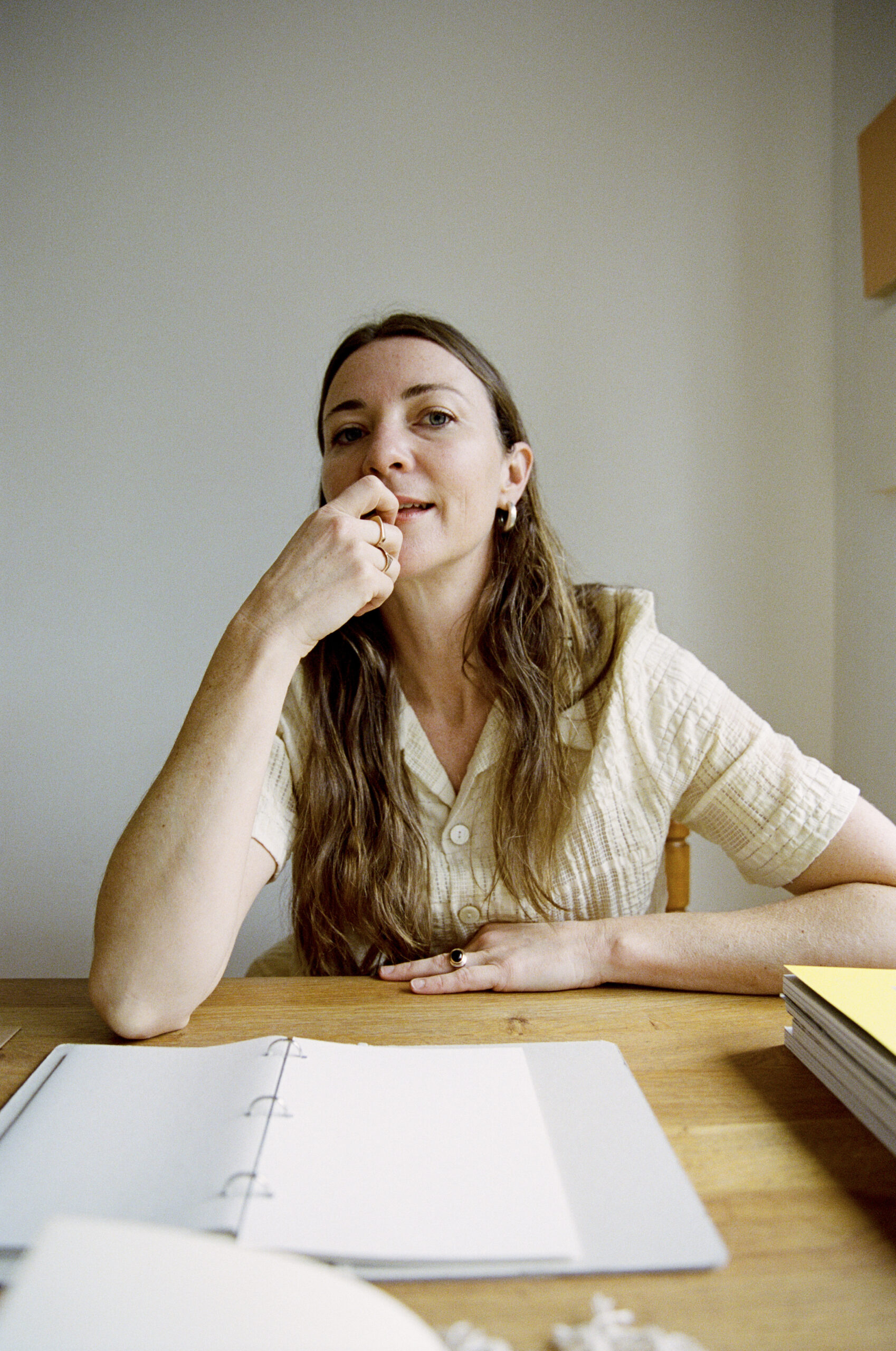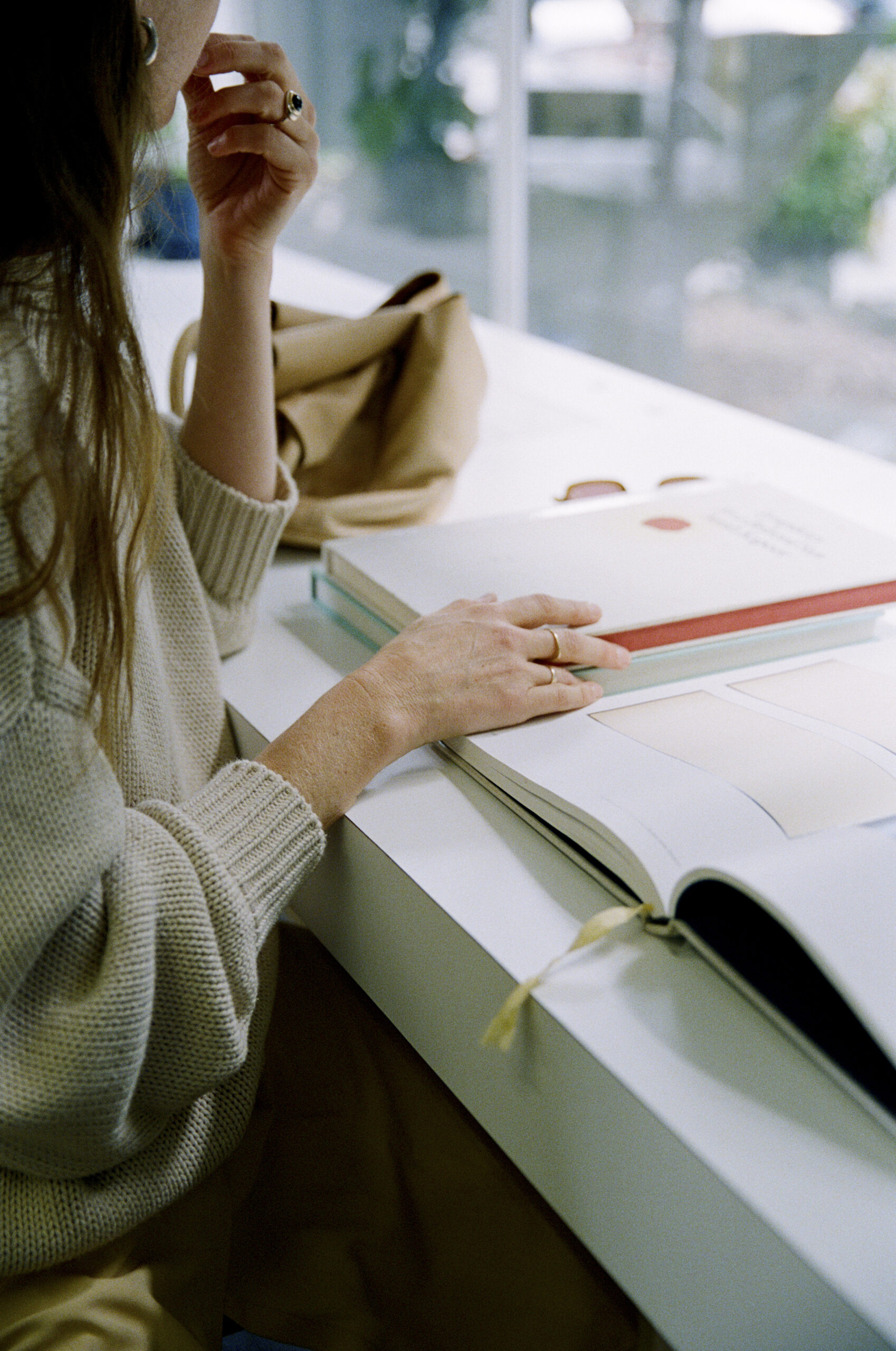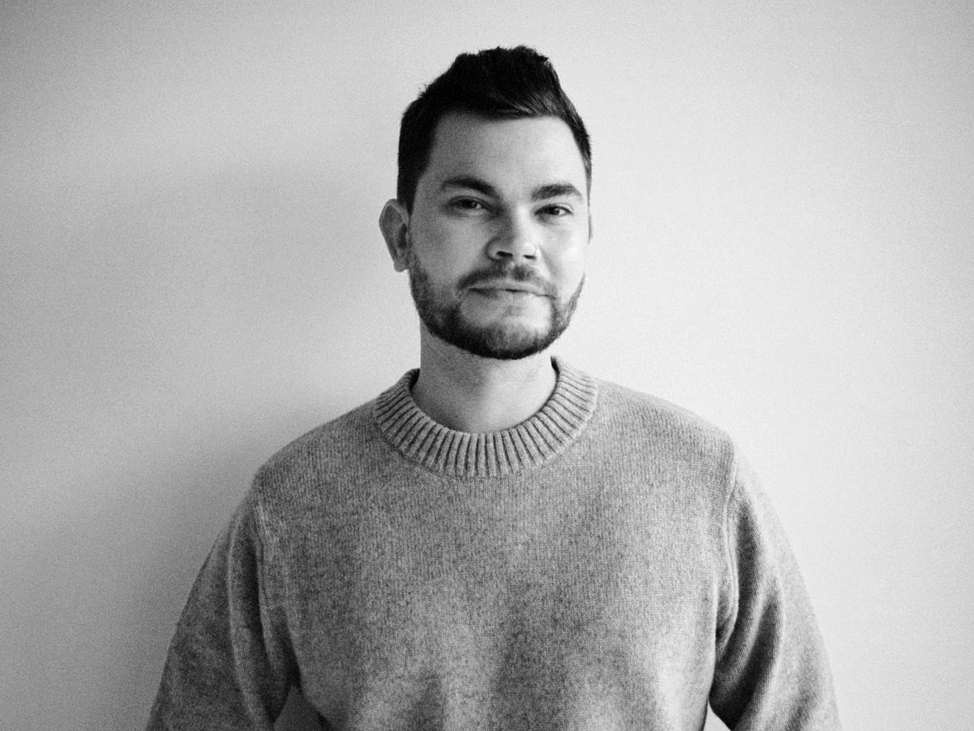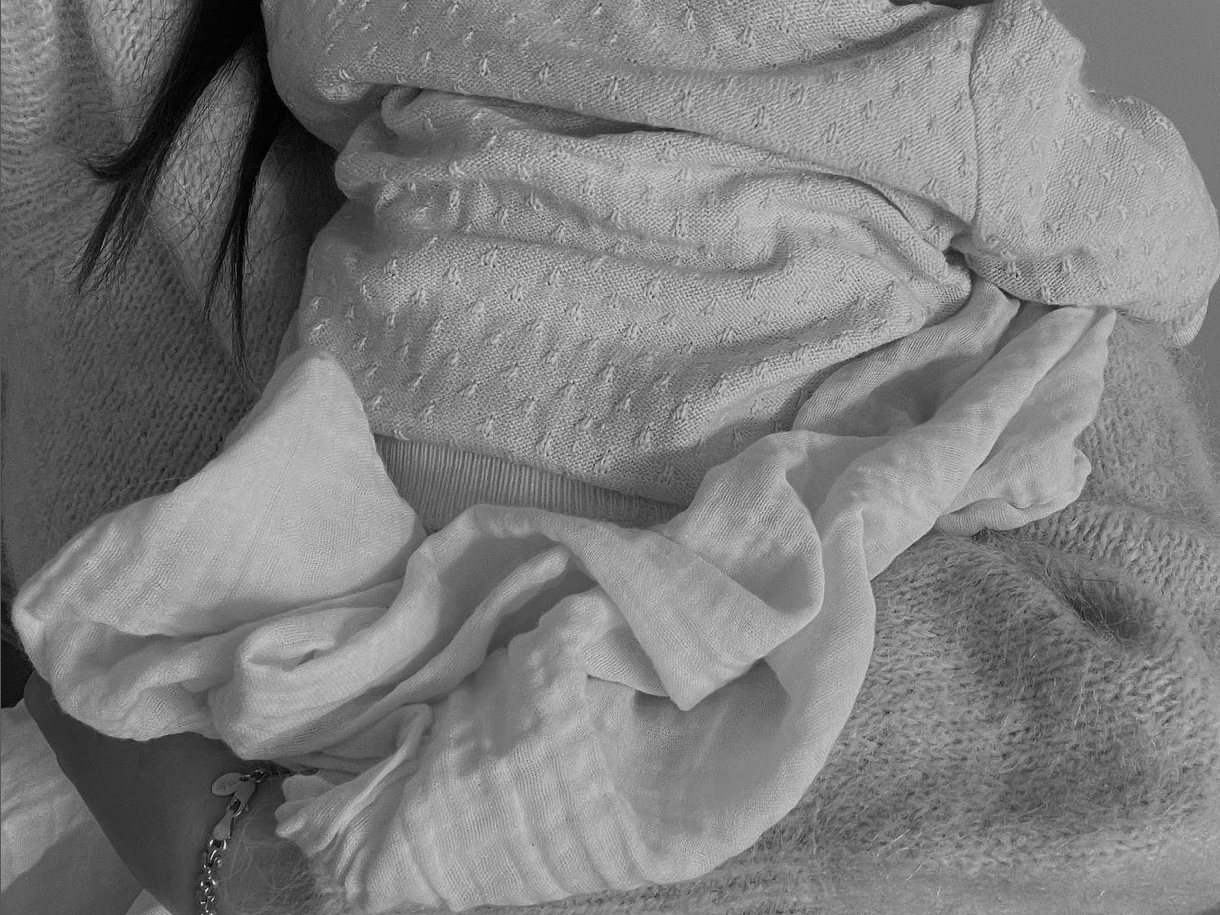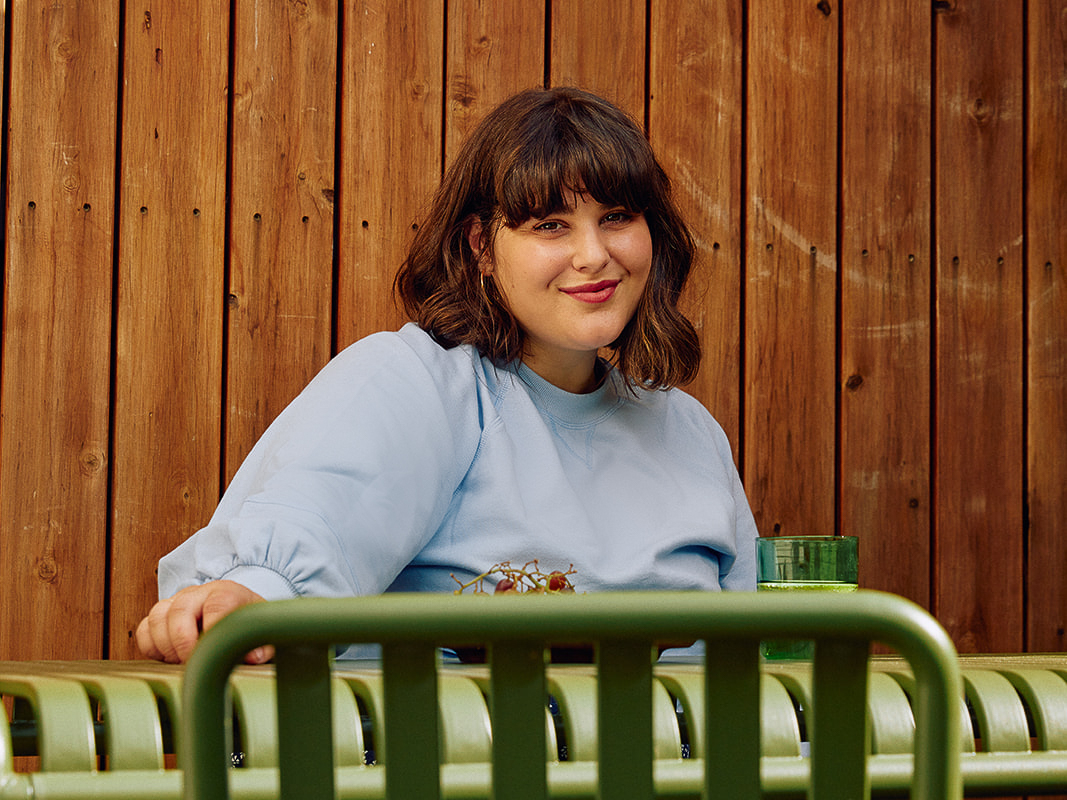Yasmine Ganley has long embraced the oscillation of creative life; the kind of profession-agnostic work that resists clear definition, or a neat job title.
What is it like to have not just one occupation, but a career that negotiates a series of disciplines, subject areas, skills and industries? For Yasmine, who began her life as a dancer, moved into photography, content creation, marketing and copywriting, brand strategy, art direction, creative direction, publishing and editing, she has developed a vocabulary of skills that crescendo in the singular creative perspective for which she is well known.
In her Auckland home, where she does most of her work, Yasmine discusses her preference for creative boundaries, incidental ideation, and the place of independent publishing in the modern world.
U: You currently work across disciplines in a really integrated way, doing lots of different things that are all interrelated. Was this intentional?
YG: I can be obsessed about capturing exactly what I want to see, so find myself doing multiple jobs and roles. I think by default I built a visual and written language with my outputs, and this work attracted the like-minded. I also know that I said yes to work that I didn’t totally know how to do but was highly excited about doing. In these moments I said yes anyway and learnt on the job.
For a long time, I didn’t really know how to explain what I do, or how to put a job title against it, so in order for me to grow into my career, I didn’t know where to start because there were multiple options and none of which I particularly liked. But as time has gone on, I just commit to the idea that I can only make the best call for myself at that time, and then go with it until it doesn’t serve me. And hope that ultimately this will lead me in my best direction. I am not someone who writes goals. Well, maybe small silly life goals, like having a rambling rose bush that grows in the centre of a lawn, but I never sit there and think, oh I hope my work takes me ‘here’. I just take it as it comes.
U: Where did you first develop an interest in the visual, creative and performing arts and publishing?
YG: I used to build pretend restaurants in my garden when I was little, and I remember making a scrapbook of swimsuit designs! Then I started dancing when I was eight years old, which led me to study Contemporary Dance at The New Zealand School of Dance in Wellington. I graduated in 2003 and got my first experience as a professional working with a dance theatre company from The Netherlands. We toured a show with live musicians that was completely improvised from start to finish. I then joined a local company, which I toured with for five years. A lot of my friends during this time were studying arts, fashion design, and performing too. We were all interested and supportive of each other’s work.
"For a long time, I didn’t really know how to explain what I do, or how to put a job title against it...I just commit to the idea that I can only make the best call for myself at that time, and then go with it until it doesn’t serve me."
Yasmine Ganley
"For a long time, I didn’t really know how to explain what I do, or how to put a job title against it...I just commit to the idea that I can only make the best call for myself at that time, and then go with it until it doesn’t serve me."
Yasmine Ganley
How did you find yourself where you are now?
I guess my journey for the path I am on now started with anyonegirl.com, which was originally a portfolio space for me that I filled in with little things I found cool or interesting. That side of it sort of took over, and it developed a small and loyal readership. Nowadays, it serves a whole other creative community as a digital platform devoid of commercial agenda, where they can find support of true expression.
Some of the images and essays that would be submitted to anyonegirl were far too glorious to hide in the web of the internet, and I think this was a motivation for me to create something more tangible and collectible, which is when WAIST was born. I should say, too, that somewhere along the line I was introduced to graphic designer Natasha Mead who redesigned anyonegirl.com to be a more elevated offering, her touch made the content sing, and immediately the website had a very book-y feel. Together we’d spoken about our love of books, and so WAIST was natural evolution for us. We made five volumes. Although this project is currently on pause, Natasha is so precious to me.
How much did your earlier work or life influence you and what you do now?
I think by having anyonegirl.com, I naturally carved out an aesthetic and spoke to a certain reader, mostly women who resonated with the same kinds of stories and visual language that I was interested in. Through anyonegirl.com I was given the opportunity to write and photograph for outlets beyond my own. Some of these clients I still work for today, they’re like family. I guess we have grown together. I took on more and more freelance work, doing mostly content creation at first, and through experience, my confidence grew in areas such as marketing, copywriting, and photography. All of that has amounted to me now working in the realm of rebranding, art direction and creative direction.
The only parallels I can draw from my dance background is that I understand the importance of timing and rhythm, and have tools that allow me to choreograph and tell stories well.
"I like seeing things come to life. That satisfaction of having something that exists in your heart, your mind’s eye, or your gut, and then realising it into the world and having other people respond or resonate with it too, is joyful. It reminds me that we are all searching for togetherness."
Yasmine Ganley
"I like seeing things come to life. That satisfaction of having something that exists in your heart, your mind’s eye, or your gut, and then realising it into the world and having other people respond or resonate with it too, is joyful. It reminds me that we are all searching for togetherness."
Yasmine Ganley
Collaboration is so central to the work that you do now, particularly in your current role as Editor of Island magazine. How do you approach collaborative creative partnerships and symbiotic working relationships to achieve the same vision or outcome?
My most recent exposure to working with a team is with ISLAND magazine, which has been so fun for me to work with people who have similar values, but different references and connections. Although working with new teams and creatives has its challenges (working out a common language and finding a place where you can all feel seen and have your idea realised in some way), its also has its joys (to be surprised, or learn a new way of doing something).
Can you recall a person or experience that has shaped how you approach your work?
I have learnt the most from my peers, especially my crew of women who I worked closely with for so many projects (Greta van der Star, Natasha Mead, Ophelia Mikkelson) the way they handle their client’s requests, their boundaries on time, how they communicate with their team and their clients, how to charge a proper rate, and how to learn to say thank you but no thank you.
Sometimes I collect little nuggets of wisdom I hear on podcasts, or read in interviews, that act like little reminders when I’m feeling lost or over it. Most of them are not from people doing anything similar to what I do, and I appreciate the distance, but apply their methods and philosophies to my own life and outlook.
"Be obsessed with what you do. Love it. Keep learning. Be kind. Be fluid. Lose your ego. Remember that this work is not serious. Always be over-generous and give ideas away.”
Yasmine Ganley
"Be obsessed with what you do. Love it. Keep learning. Be kind. Be fluid. Lose your ego. Remember that this work is not serious. Always be over-generous and give ideas away.”
Yasmine Ganley
What are some of the philosophies that have resonated and that you have applied to your life or approach to work?
Be obsessed with what you do, love it, keep learning, be kind, lose your ego, always be over-generous, remember that this work is not serious, be fluid, give ideas away.
Are there any experiences during your career so far that have pushed the parameters of what felt familiar or comfortable to you? What did you take away from these moments?
Being asked to be editor of ISLAND magazine was quite a scary notion for me. I guess it is a role that brings a lot of my skills into play, but I had never had a responsibility like that before. Every issue I put out, I learnt something new, whether about the process or the result, both are equally important. The last issue I felt I got the closest to what I imagine the magazine to be, and I think it is because we listened mostly to the ideas that sang true to our vision, not what we thought people wanted us to offer.
"It is always in the moments where I think 'I should be working but I’m just going to do this instead,’ that I have lightbulb clarity on something that I couldn’t work out."
Yasmine Ganley
"It is always in the moments where I think 'I should be working but I’m just going to do this instead,’ that I have lightbulb clarity on something that I couldn’t work out."
Yasmine Ganley
When you think about the vision or perspective you offer, how much of your own personal sensibilities, narratives, and aesthetic leanings do you include in your work?
I would say all of me is found throughout all facets of my work – it’s one big blur.
Is creative freedom important to you?
Having creative freedom is fun, but I prefer to have some boundaries, something to unlock or starting points to work from. I enjoy working with a brand and finding its purpose or main driving factor, concentrating their communications down to their essence, or to three words, or one picture.
I see creative freedom as more of a time factor. I’m currently driven by the idea of having a day in the week that is mine to fill up in the way I best can: see a day-film (biggest indulgence ever), go to the library, listen to a podcast, whatever. It is always in these moments where I think ‘I should be working but I’m just going to do this instead,’ that I have lightbulb clarity on something that I couldn’t work out, or an idea for how to start that sentence, or concept. Walking away, being distracted for a moment, is really worthwhile and I am dead keen on finding a way to make this part of my ‘working’ week.
What do you keep around you as you work?
A beautiful glow-y lamp that my partner bought me, my glasses, EarPods, notebook, pencil, and water. I get up for tea and snacks, and to open the windows. I try to keep my phone away from my desk when I’m in deep-work mode.
Do you have any rituals that inform the way you approach work?
I like to switch off my email tabs when I’m writing, and only have that document in front of me. I have gotten into taking voice recordings on my drive home or into work, as painful as they are to listen back on, driving is such a good time to work things out.
How does motherhood factor in to your working routine?
I’ve given up. It’s just one big mash. But if I’m with my kids, then I try my hardest not to be on my phone or on calls, just be with them. The weekends I keep as clear as possible for family time. I’d rather have a back to back week that then deserves me a slow, easy weekend where I can be present with my kids. I mean, sometimes I drag them with me if need be, and that’s okay, for them to see me working, hang out with my teams, sit in the office chairs, waste a pile of post-it notes, part of me likes that they get to be exposed to what my life feels like when they’re not usually around.
How would you describe the state of contemporary independent publishing?
Aside from the worldwide paper shortage (eek) I think independent publishing will always have its place. It exists outside of the internet, which is becoming more and more grotesque by the day but will always serve a purpose. I think people will return to books and magazines over time. They will crave something to change their pace, something tangible they can collect and revisit over time. Slowness, simplified, real, present, and valuable information is what I think we will desire in the coming years. Books will always serve us.
What continues to draw you to what you do?
I like seeing things come to life. That satisfaction of having something that exists in your heart, your mind’s eye, or your gut, and then to release it out into the world and have other people respond or resonate with it too, is joyful. It reminds me that we as people have so much in common and we are all searching for togetherness.
Portraits by Greta Van Der Star
Interview by Magdalene Shapter


